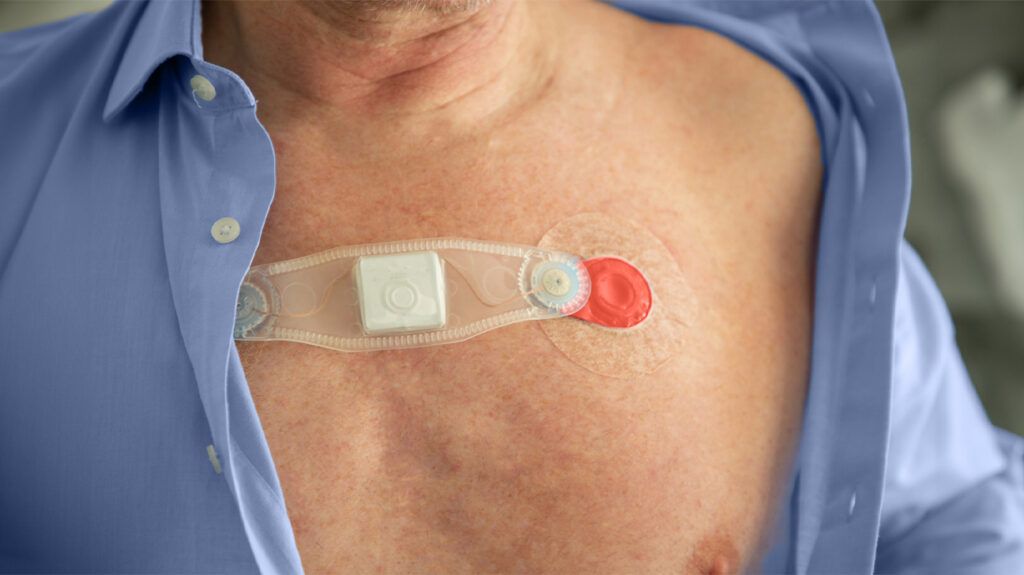The Jones criteria is a diagnostic tool for diagnosing acute rheumatic fever (ARF). It involves testing heart function using echocardiograms, X-rays, blood tests, and other screenings.
Rheumatic heart disease (RHD) is where the valves of the heart become inflamed and damaged due to a potentially life threatening condition called rheumatic fever (RF).
The Jones criteria is a diagnostic tool that doctors use to help diagnose acute RF.
RF is an inflammatory disease that can develop following infection with group A streptococcus bacteria. The disease is rare in the United States and other developed countries, where most people have access to appropriate antibiotic treatments.
Cardiovascular health resources
Visit our dedicated hub for more research-backed information and in-depth resources on cardiovascular health.

As a 2024 review explains, doctors diagnose ARF when a person has experienced a recent streptococcal infection alongside either two major criteria or one major and two minor criteria.
The Jones criteria outlines five major criteria of RF:
- Carditis: This refers to inflammation of the heart.
- Arthritis: This condition involves pain and inflammation in the joints.
- Chorea: This is a movement disorder
involving excessive involuntary movements. - Erythema marginatum: This refers to skin redness or other color changes alongside inflammation,
most commonly resulting from ARF. - Subcutaneous nodules: These refer to lesions in the deeper layers of the skin, such as the deep dermis, or subcutis.
The minor criteria are as follows:
- A prolonged PR interval: This refers to an atypical heart rhythm that shows up on an EKG.
- Monoarthralgia: This is the medical term for pain in a single joint.
- A fever: When a person’s body temperature reaches 100.4°F (38°C) or above.
- Blood tests that indicate inflammation: These tests will show either:
- a peak erythrocyte sedimentation rate (ESR) equal to or greater than 30 millimeters (mm) per deciliter (dL)
- a peak C-reactive protein (CRP) equal to or greater than 3 milligrams per dL. Both blood tests measure inflammation in the body.
According to a 2024 review, the Jones criteria remains the gold standard for diagnosing ARF.
Diagnosing rheumatic heart disease centers around the Jones criteria.
A thorough history and physical are important in determining signs such as joint pain, fever, and nodules.
An echocardiogram is also important to determine any inflammatory signs in the heart.
Additionally, an EKG is necessary to check the PR interval, which helps measure electrical activity in the heart.
Other typical tests
- checking for outward signs of congestive heart failure (CHF), such as:
- abdominal swelling
- swelling of the feet or ankles
- shortness of breath
- an inability to lie down due to breathing difficulties
- listening to the heart with a stethoscope
- an EKG to check for heart arrhythmias or heart block
- a chest X-ray to check for signs of CHF, such as enlargement of the heart or an accumulation of fluid in the lungs
- a heart ultrasound to check for signs of RHD
As the 2023 review explains, doctors will need to rule out the following conditions, which may cause similar symptoms to RHD:
- Endocarditis: This refers to inflammation of the endocardium, which is the innermost layer of the heart.
- Functional mitral regurgitation (FMR) associated with viral illness, such as viral myocarditis: With FMR, some blood flows backwards through the heart from the left ventricle into the left atrium via the mitral valve.
- Mitral valve prolapse: A condition in which the flaps of the mitral valve, which sit in the left side of the heart, do not consistently close properly between heartbeats.
The Jones criteria is a tool for diagnosing acute rheumatic fever (ARF) in people at moderate or high risk of the condition.
To meet the necessary criteria for an ARF diagnosis, an individual must have had a recent streptococcal infection plus two major criteria, such as carditis and arthritis, or one major criterion alongside one minor criterion, such as a high fever and pain in a single joint.
The diagnostic procedure for rheumatic heart disease involves tests to assess heart function. This generally includes a physical examination plus an electrocardiogram to assess the heart’s rhythm and overall function.
Doctors may also order imaging tests to assess the heart’s structure and to check for possible signs of heart disease.
